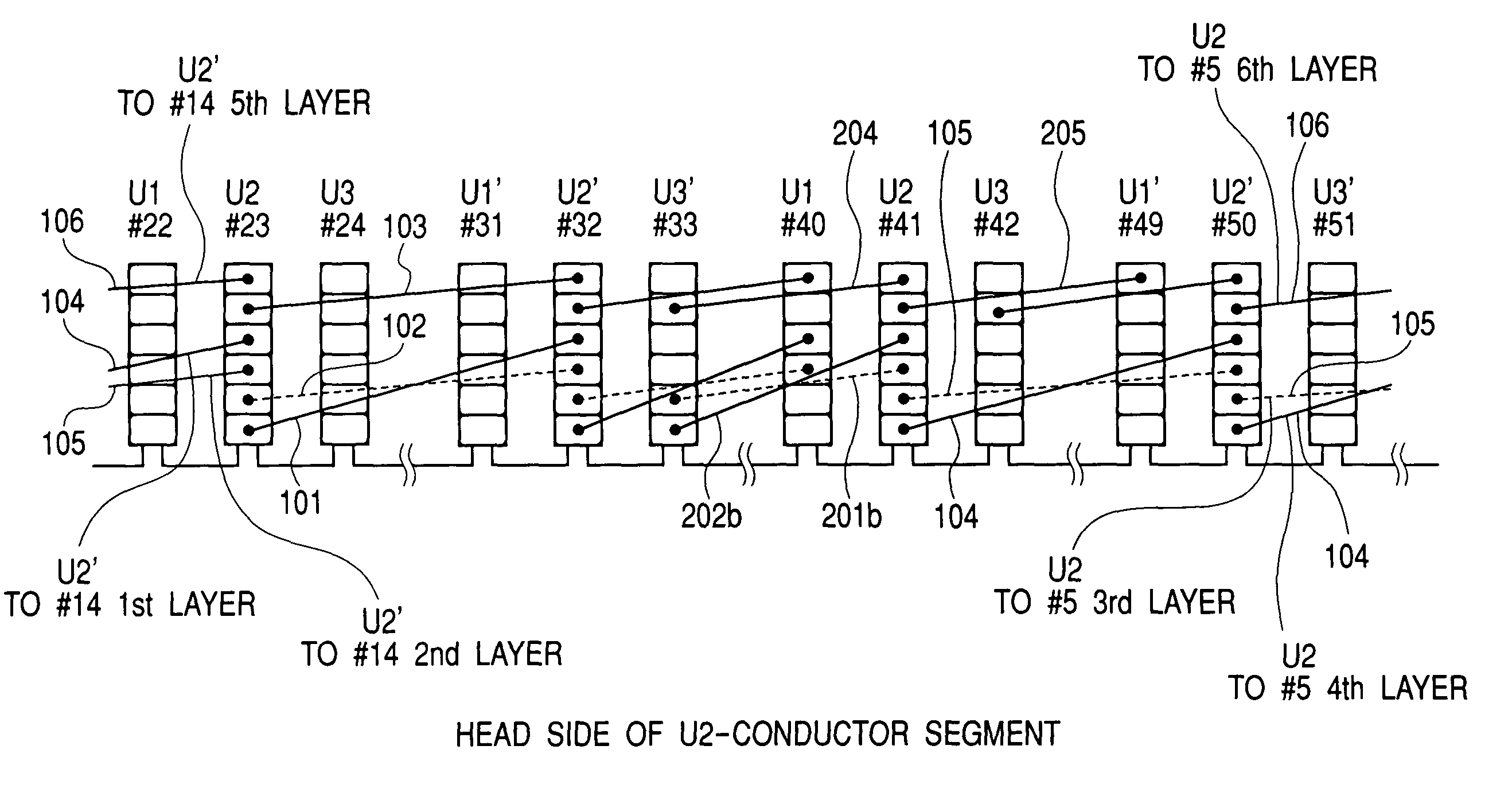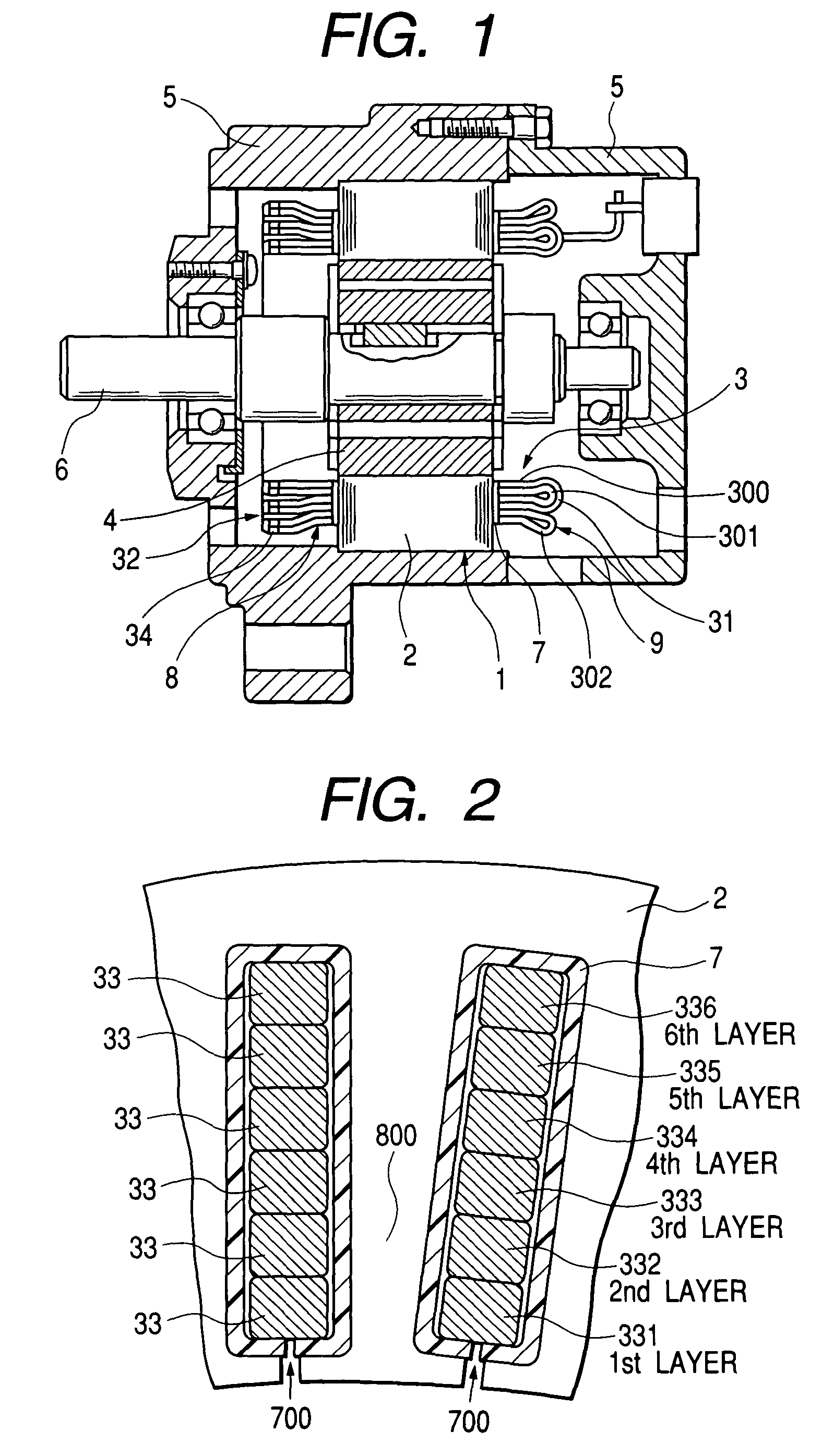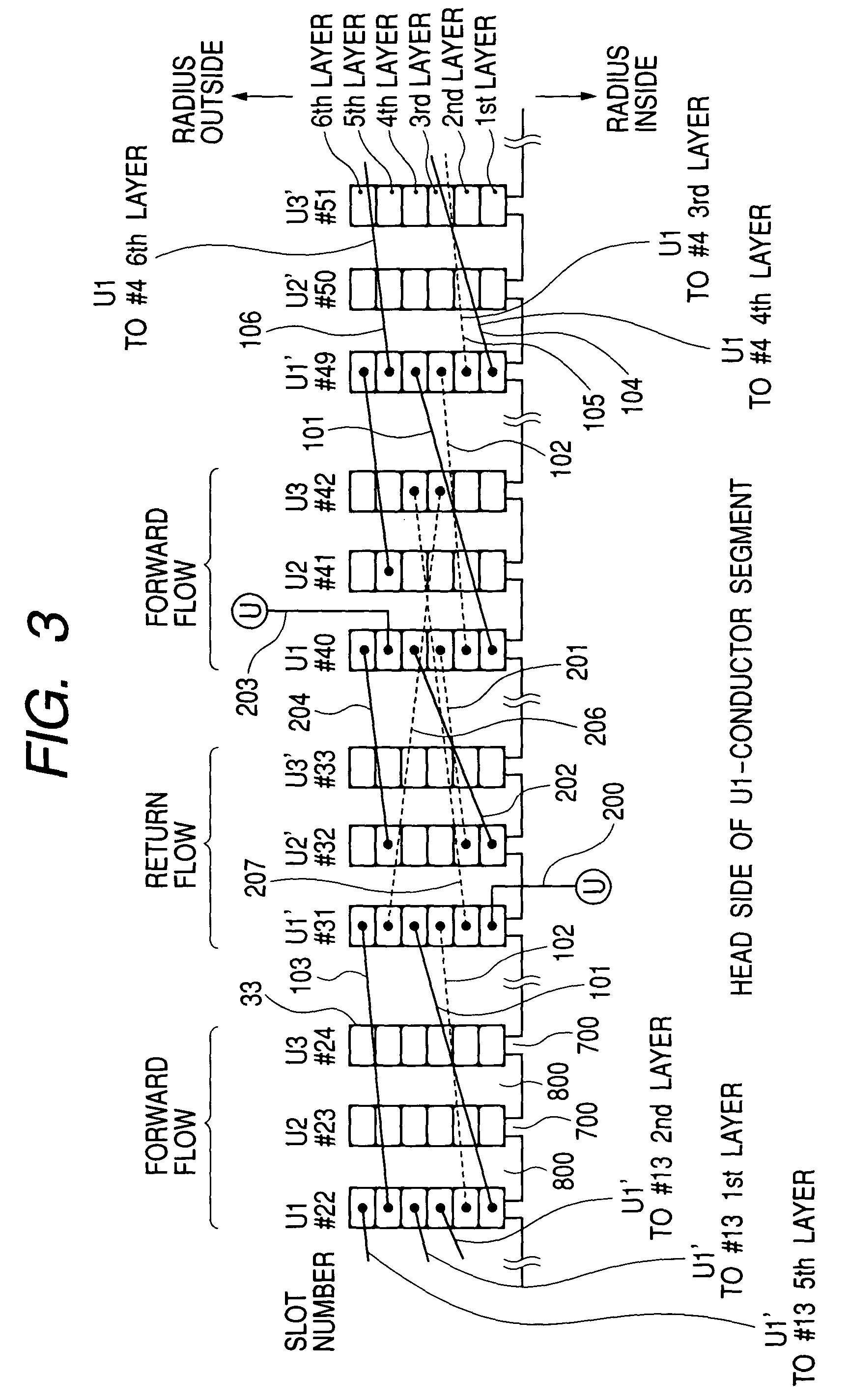Sequentially joined-segment coil for rotary electrical machine
a rotary electric machine and segment coil technology, applied in synchronous machines, windings, dynamo-electric components, etc., can solve the problems of increasing the total length of the rotary electric machine, increasing the resistance of the coil, and increasing the length of the coil end, so as to minimize the drop in insulation capability of the conductor segment, reduce the number of rings, and avoid friction between the ends.
- Summary
- Abstract
- Description
- Claims
- Application Information
AI Technical Summary
Benefits of technology
Problems solved by technology
Method used
Image
Examples
second embodiment
[0121]FIG. 12 is a sectional view which shows the stator 1 in the axial direction thereof in detail. FIG. 13 is a sectional view which shows the stator 1 in the radius direction thereof in detail.
[0122]The stator 1 has formed therein, as described above, three (k=3) same phase slots 351, 352, and 353 for each magnetic pole. A total of p·k·m (p is the number of phases, and m is the number of magnetic poles) slots may be arrayed at equi-angular intervals in the circumferential direction of the core 2. Specifically, the three slots 351 to 353 are arrayed adjacent to each other and have the same phase winding installed therein. In the following discussion, the slots 351, 352, and 353 will also be referred to as a first same phase slot, a second same phase slot, and a third same phase slot, respectively.
[0123]The six side conductor portions 331 to 336 of the conductor segments 30 are, as described above, arrayed, as illustrated in FIG. 3, in the radius direction of the core 2.
[0124]The c...
third embodiment
[0157]FIG. 21 shows the conductor segment 30 which includes three types of segments: the large-sized turn conductor segment 300, the small-sized turn conductor segment 301, and the small-sized turn conductor segment 302. The large-sized turn conductor 300 has the side conductor portion 331 disposed at the first layer position and the side conductor portion 334 disposed at the fourth layer position. The small-sized turn conductor segment 301 has the side conductor portion 332 disposed at the second layer position and the side conductor portion 333 disposed at the third layer position. The large-size turn conductor segment 300 and the small-sized turn conductor segment 301 form a circumferentially joined four-conductor leg coil, as will also be referred to as a first coil below. The small-sized turn conductor segment 302 has the side conductor portion 335 disposed at the fifth layer position and the side conductor portion 336 disposed at the sixth layer position and forms a circumfere...
PUM
 Login to View More
Login to View More Abstract
Description
Claims
Application Information
 Login to View More
Login to View More - R&D
- Intellectual Property
- Life Sciences
- Materials
- Tech Scout
- Unparalleled Data Quality
- Higher Quality Content
- 60% Fewer Hallucinations
Browse by: Latest US Patents, China's latest patents, Technical Efficacy Thesaurus, Application Domain, Technology Topic, Popular Technical Reports.
© 2025 PatSnap. All rights reserved.Legal|Privacy policy|Modern Slavery Act Transparency Statement|Sitemap|About US| Contact US: help@patsnap.com



